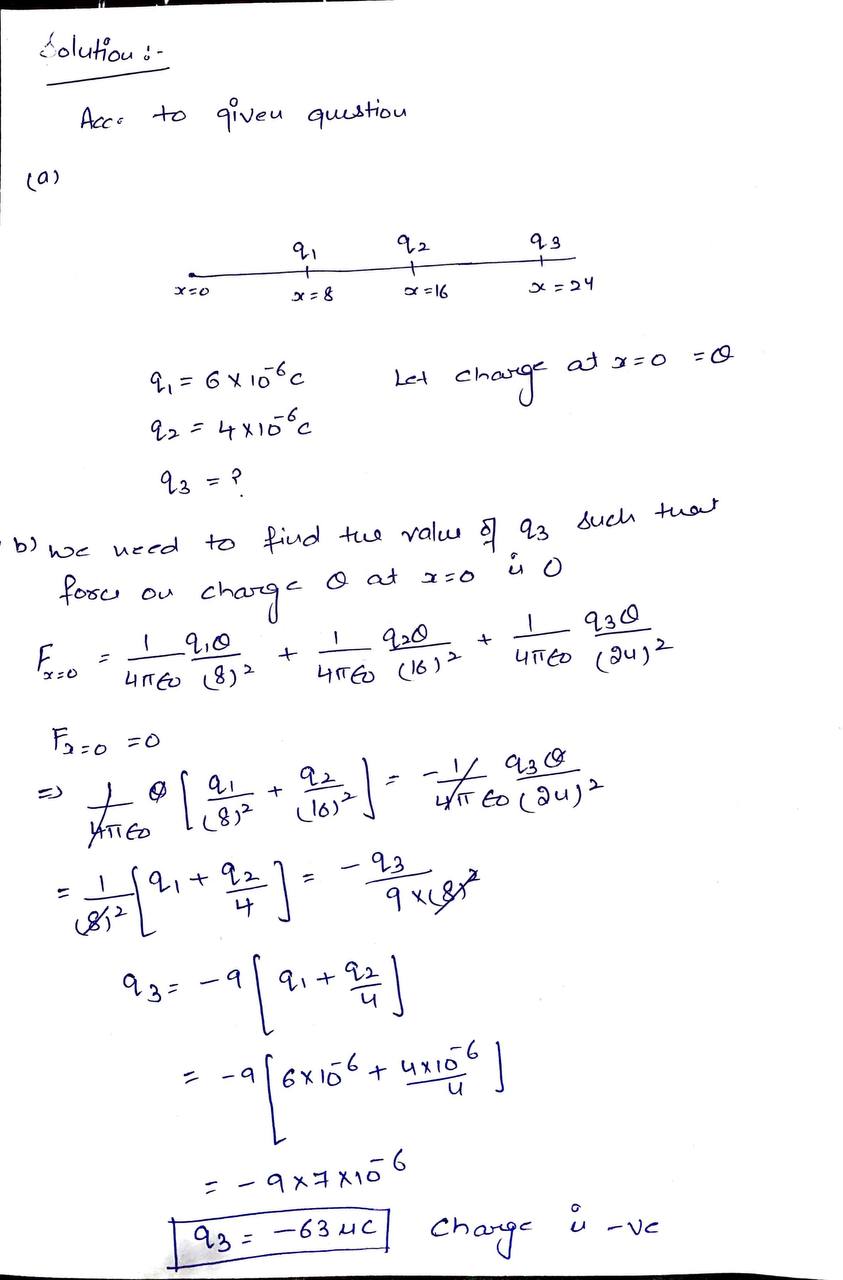forget to flip the quiz over! 1. Point charges of q,-6.0 μC and q₂=4.0 μC are placed on the x-axis, at x=8.0 m and x=16 m, respectively. What charge q3 must be placed at x=24 m so that any charge placed at the origin would experience no electrostatic force? a. Draw q₁, 92, and q3 on the x-axis. b. In order to produce no net force at the origin, the charge q3 must have what sign (positive or negative) of charge?
forget to flip the quiz over! 1. Point charges of q,-6.0 μC and q₂=4.0 μC are placed on the x-axis, at x=8.0 m and x=16 m, respectively. What charge q3 must be placed at x=24 m so that any charge placed at the origin would experience no electrostatic force? a. Draw q₁, 92, and q3 on the x-axis. b. In order to produce no net force at the origin, the charge q3 must have what sign (positive or negative) of charge?
Related questions
Question
calculate the charge q3 needed to result in no net force at the origin. based on info given in 1. don’t forget to include the sign of the charge in your final answer.

Transcribed Image Text:Name: Alison De
La Cruz
PHYS 106 Quiz 1
Show your work or explain your reasoning where applicable. Write legibly. Include units.
When solving for a specific value, box your final answer.
Some useful information:
Coulomb's law: F = K²
The SI prefix u is equivalent to 10.
where k = 9 x 10° Nm²/C²
Part d of this problem is on the back. Don't forget to flip the quiz over!
1.
Point charges of q,-6.0 μC and q₂=4.0 μC are placed on the x-axis, at x=8.0 m and x=16
m, respectively. What charge q3 must be placed at x=24 m so that any charge placed at
the origin would experience no electrostatic force?
a. Draw q₁, 92, and q3 on the x-axis.
b. In order to produce no net force at the origin, the charge q3 must have what sign
(positive or negative) of charge?
C. Draw the forces on a positive test charge q at the origin due to each of the thre
charges. Label the forces according to the following convention: F, is the force
the test charge due to charge x.
Expert Solution
Step 1: calculation of charge q3

Step by step
Solved in 3 steps with 3 images
